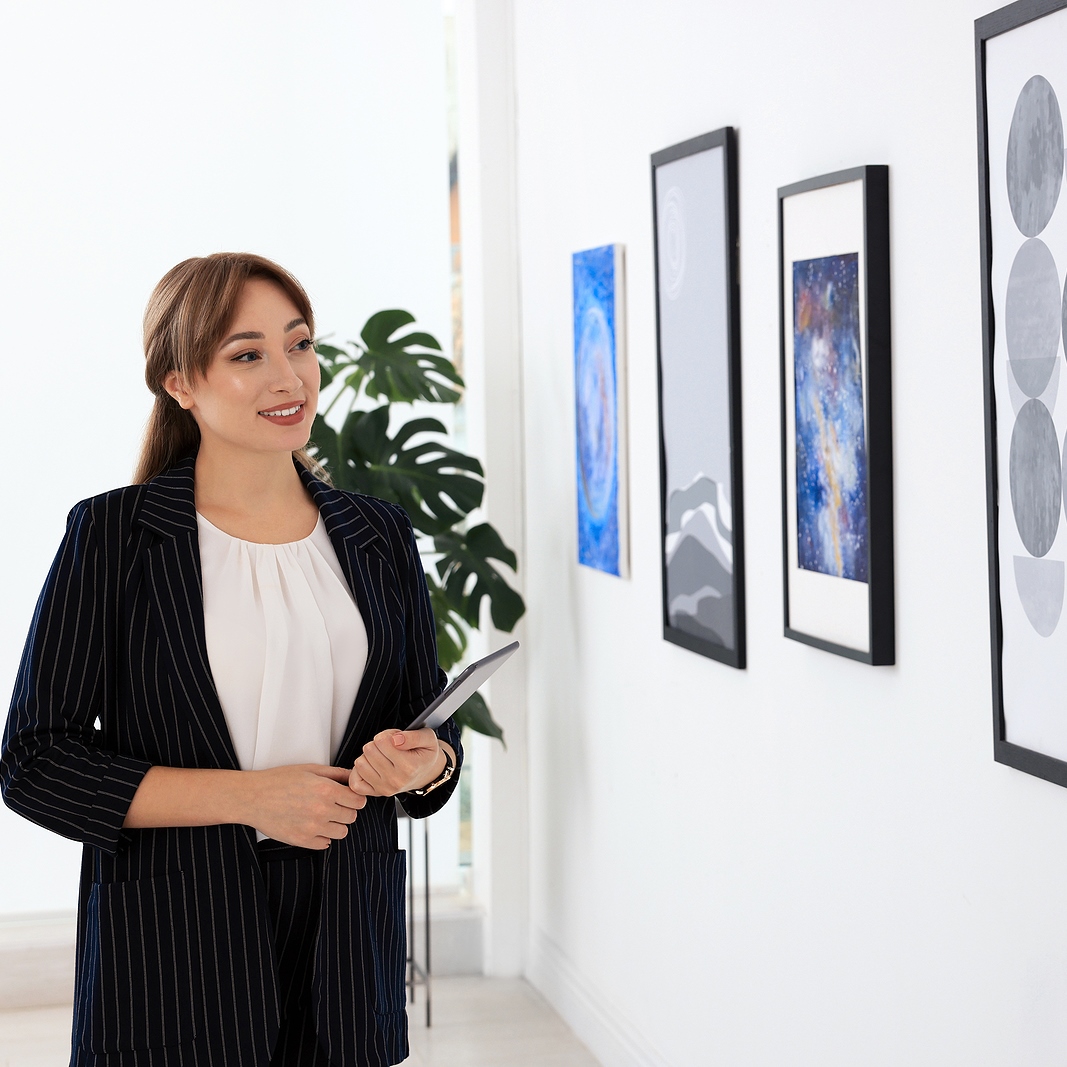If you’ve ever been to an art exhibition at a gallery or studio, whether it’s an established one or a pop-up, you’ll know just how important the ambiance of the room is to the event’s success.
The ambiance of an art exhibition is everything. As important as the art is – after all, there wouldn’t be an exhibition without it – how your guests feel as they move through the space is equally important. A good ambiance draws you in and lets you connect with the art. But it doesn’t just happen by itself. You need to set the right mood through lighting, air quality, temperature, sound, and a whole lot more. When it all works together, it raises the art and leaves a lasting impression on the visitor.
You don’t have to be complicated, just support the art and make your guests feel comfortable and engaged. Here’s how to go about it.
Lighting: Focusing on the Art
Lighting is essential to displaying art and setting the mood in an exhibition. The way light interacts with color, texture, and shadow can completely change how you see the art.
Natural light brings out the detail during the day. However, when the sun goes down, you want soft, controlled light that creates an intimate space. Consider using spotlights to focus on specific pieces; they’re great for directing attention to where you feel is most important. Avoid harsh lights that cause glare or unwanted reflections on glass surfaces. Position the lights thoughtfully so you perfectly illuminate every piece. It’ll allow your guests to see the depth and beauty of the art without distraction.
Sound: Creating a Gentle Soundscape
Sound has a subtle but powerful part to play in an art exhibition. Whether your artwork is a painting, sculpture, or an installation, the right background sound can enhance the experience without overpowering it.
Soft ambient music can set the tone, whether you want to create a calm, reflective space or energize the room with something more dynamic. That being said, silence can be golden. It lets your guests completely immerse themselves in the art.
Consider the room’s acoustics too. High ceilings and hard surfaces can create echoes that may distract from the experience. Soundproofing or using materials to absorb the noise will create a peaceful space where the art can shine.
Air Quality: A Fresh Space
Good air quality is a must for creating a fresh, inviting art exhibition environment. Clean air makes your visitors feel comfortable while protecting delicate art from dust and pollutants.
Ventilation and air circulation are necessary for stopping your room from getting stagnant or stale. Be sure to keep your heating and cooling well-maintained. Check and clean aircon filters regularly to keep the air fresh and clean.
A well-ventilated gallery or art studio enhances the overall experience. It lets your guests focus on the art without distraction and protects the longevity of the art on display.
Temperature and Comfort: Keeping Your Guests Engaged
One often overlooked but essential point to consider is room temperature. Keeping your guests comfortable and engaged throughout an art exhibition is vital.
No one wants to wander through a gallery that’s too hot or too cold. A well-controlled temperature creates a welcoming space, so people can linger and take their time to view the art. For example, the National Gallery of Victoria sets its temperature between 15°C and 25°C, depending on the season. The perfect room temperature benefits both the visitor and the art itself. It's particularly important for delicate pieces that might be sensitive to heat or humidity.
Make sure you have good airflow so the room doesn’t feel crowded and claustrophobic, particularly during peak hours. When the visitor feels physically comfortable, they will be far more likely to focus on the art and enjoy the experience.
Furniture and Layout: Flow and Interaction
The right furniture and layout can greatly affect how the visitor experiences an art exhibition.
Seating and resting areas let your guests pause and take in the art around them. But it’s important to strike the right balance. Your furniture should enhance the space rather than overpower it. Choose minimal, functional pieces that complement the art and don’t compete with the displays.
The room layout should guide visitors through the exhibition, from one piece to the next, without feeling crowded. Thoughtfully designed pathways make the space feel open and inviting. They let your guests engage more with the art as they move through the exhibition at their own pace.
Personal Touches: Making It Unforgettable
Whether you’re displaying your own art or that of others, adding a personal touch to your gallery or studio space can elevate the exhibition from merely good to great.
Themed décor or signage is great for making the experience more immersive. Interactive elements like touchscreens or audio guides let your guests connect with the art on a deeper level, making the show feel more dynamic and inclusive. Subtle elements like plants, soft scents, or custom lighting can set the mood and give the room a more welcoming feel.
Keep in mind that these personal touches should enhance the art, not overwhelm it. You want to find a balance between showing the work and creating a space that lingers with visitors long after they leave.
Leave the Right Mark
There’s more to creating the perfect ambiance for an art exhibition than just hanging the art on the wall. It’s a balance of lighting, sound, temperature, and personal touches that allows the art to shine while keeping guests comfortable and engaged.
When all these elements come together, they create an atmosphere that pulls people in, makes them stay, and leaves a lasting impression. Every detail matters, from clean air and good lighting to a naturally flowing room layout.
A well-designed exhibition doesn’t just show art. It creates an experience that your guests will remember long after leaving the gallery, so they’ll want to come back for more.
